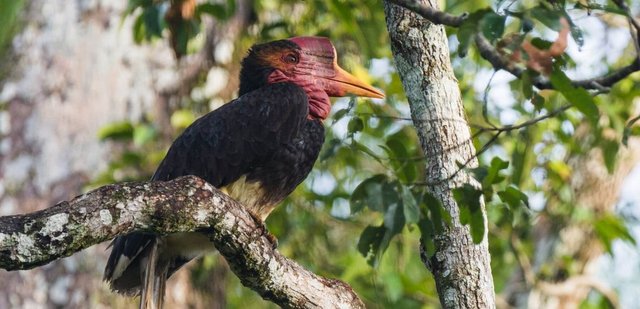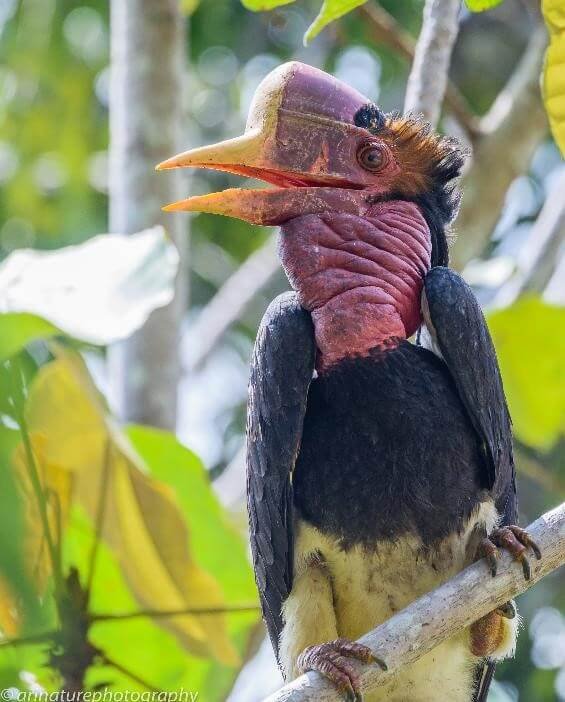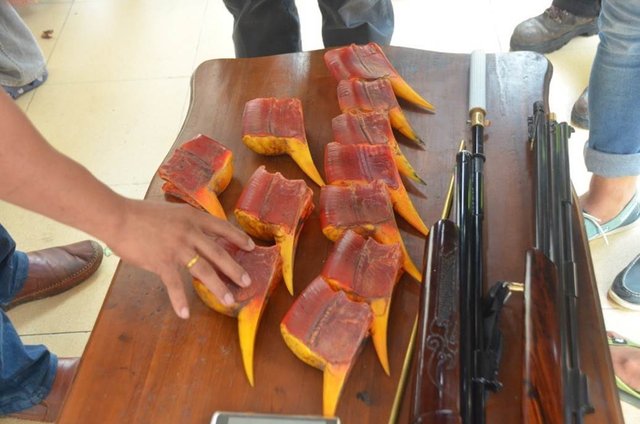The Helmeted Hornbill crisis and BirdLife’s conservation efforts
(++++ @anomaly+++)

What is the issue?
The critically endangered Helmeted Hornbill Rhinoplax vigil is one of the most unusual hornbills, the only one with a solid casque. However, this is precisely the cause of its downfall. The Helmeted Hornbills have been hunted for their casques in Borneo and traded with China for over a thousand years but in the last nine years, the species has come under new and unprecedented pressure from an exploding demand for casques which are in great demand as a material for carved jewelry and ornaments.

The Helmeted Hornbill male (credit: Muhammad Alzahri/arinature photography)
The bird is found in virgin lowland forest habitats in Brunei, Indonesia (Sumatra and Kalimantan), Malaysia, south Myanmar and south Thailand; it used to occur in Singapore but is now extinct there. It is a low-density species, even in prime habitat, where it plays an important ecological role in seed dispersal and tends to be absent in disturbed forests, peat swamps, and coastal forests. It has the most specialised diet of any hornbill and particular nest requirements.
Why the urgency?
A Helmeted Hornbill casque can fetch around US$1,000 in the black market in China. Extensive poaching is reported in Indonesia (Kalimantan and Sumatra) by organized crime networks which tend to be resourced directly by Chinese nationals or by middlemen. A minimum of 2,878 casques were seized globally in at least 59 seizure incidents between 2010 and 2017; the surge in poaching first discovered by Mr Yok-yok Hadiprakarsa of the Indonesian Hornbill Conservation Society (Rangkong Indonesia). The majority of casques enter China from Shenzhen (Guangdong) and Hong Kong from where they are sent to traditional carving centres in China.

The Helmeted Hornbill casques seized in Indonesia (credit: Dewantara/WCS)
The poaching is causing a rapid decline in populations and is feared to spread to Malaysia, Myanmar and Thailand as populations are decimated in Indonesia. In response, BirdLife International elevated the conservation status of Helmeted Hornbill from Near Threatened to Critically Endangered in the IUCN Red List of Threatened Species™ in 2015. This decline also prompted the formalization of the Helmeted Hornbill Working Group, a subgroup of IUCN SSC Hornbill Specialist Group, in May 2017 and a regional species conservation strategy and action plan produced in August 2018.
Habitat loss and degradation are also of concern because logging operations particularly target large and live dipterocarp trees which decimate suitable nesting and feeding trees for the species.
The opportunity to make a difference – work by BirdLife partnership
The threats are daunting, being driven by such high profits, that it has been essential to move the species conservation up the political agenda, nationally and globally, and identify the needs for action. BirdLife has played a key role in this work.
Red Listing: In November 2015, BirdLife uplisted the Helmeted Hornbill’s conservation status in the IUCN Red List of Threatened Species™ from Near Threatened to Critically Endangered.
Conservation Alert: Dr Nigel Collar of BirdLife International produced a series of articles in 2015 & 2016 highlighting the crisis in BirdingASIA (see Collar 2015a), World Birdwatch (Collar 2015b) and article on BirdLife’s website.